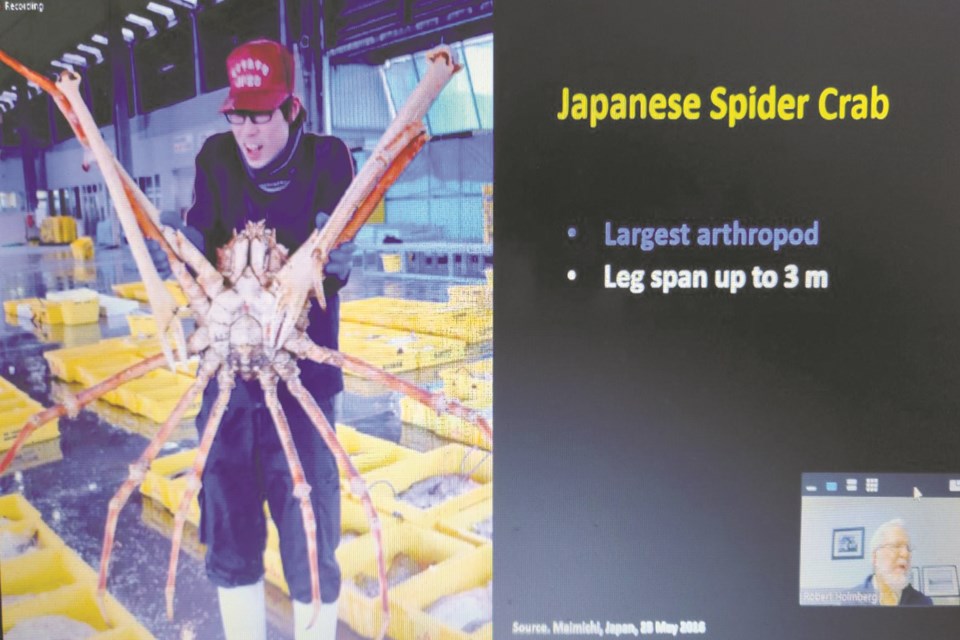ATHABASCA – Images of scuba divers and white, sandy beaches may come to the minds of many when they hear the word crustacean, but the fact is they can be found far outside the tropics and the seafood truck that occasionally frequents the river front — there could actually be a few of the them living with you right now, and you don’t even know it.
Dr. Robert Holmberg was the latest in Athabasca University’s series of speakers for Science Outreach-Athabasca Feb. 23, which was presented via Zoom, and quite well-attended by knowledge seekers and lovers of science from across the province. Holmberg’s specialization is in invertebrate zoology and ecology, and he is now retired after teaching for more than 30 years at AU. He is also a founding member of the Science Outreach program in Athabasca.
“I wanted to remind people that we live in quite a wondrous world, we forget that at times, but this world that we live in, we actually know very little about, so hopefully tonight. We'll see some of the things that we don't know things about,” Holmberg said to begin his presentation.
Crustaceans were front and centre for Holmberg’s hour-long presentation that went over the diverse array of all creatures considered crustaceans — those with hard exoskeletons, gills and two pairs of antennae — which include crabs, lobsters, crayfish, shrimps, prawns, krill and barnacles, to name a few.
There are about 47,000 species of crustaceans described by science, which is less than one-third of what is expected to be out there. From microscopic larvae to the three-metre long Japanese spider crab, they cover habitats across the world, but crustaceans are still only the second most common creature in the sea, following only mollusks. In contrast, there are roughly 55,000 species of mammals that have been described in the scientific literature, and that’s very close to all the mammals on the planet, Holmberg said.
Fresh-water crustaceans are also an essential part of the ecosystem and food chain, so if you’ve ever eaten a predatory fish, like a pike or a walleye, you’ve inadvertently eaten crustaceans. Interestingly, crayfish can also now be found in the Athabasca River basin near Whitecourt.
Most crustaceans are aquatic, but some are terrestrial, and would be familiar to most Albertans.
The common sow bug, or wood louse, for instance, is a crustacean, and while they are numerous throughout the province, these Albertan crustaceans have not been studied in depth, and like a lot of other crustaceans, we don’t know a lot about them.
They are in the group of crustaceans known as isopods, said Holmberg, noting that technically, there are no isopods in Alberta, but only because they have not been studied and described by researchers.
“We have at least one species probably two or three species, Montana has four and officially the prairie provinces have zero isopods because nobody has collected them and identified them properly and reported them in the scientific literature, but lots of people have seen them in in the prairie provinces,” said Holmberg, adding they have all been imported from Europe.
This is the type of instance where citizen scientists can play a big role by collecting specimens and delivering to a local expert, who could identify and classify, and make their presence official.
“I was quite surprised to find out they haven’t been documented,” said Holmberg. “I grew up in Saskatchewan and I know there are sow bugs there, and I found sow bugs in Alberta, but I never paid attention to them. I always expected somebody else would be interested in and document them, but doesn't seem that it's been done, and so the taxonomy has been worked out, and it's not that there's a great deal of difficulty because they're European species and the Europeans have documented far more than what we have done in North America.”


